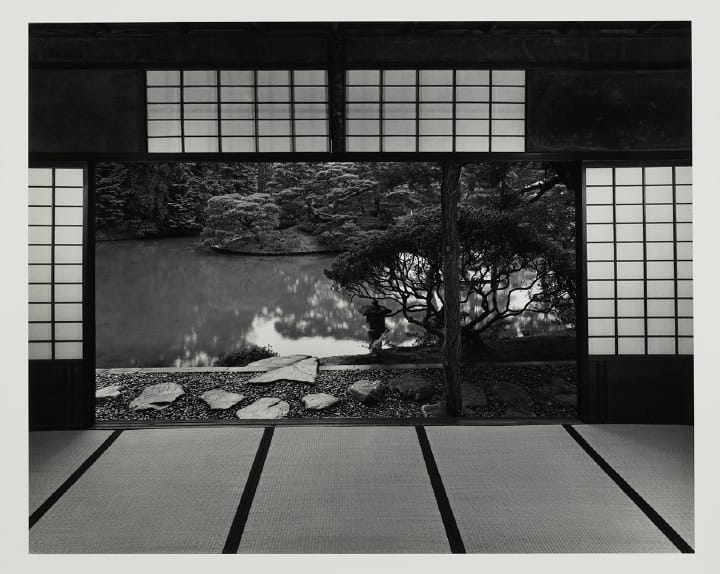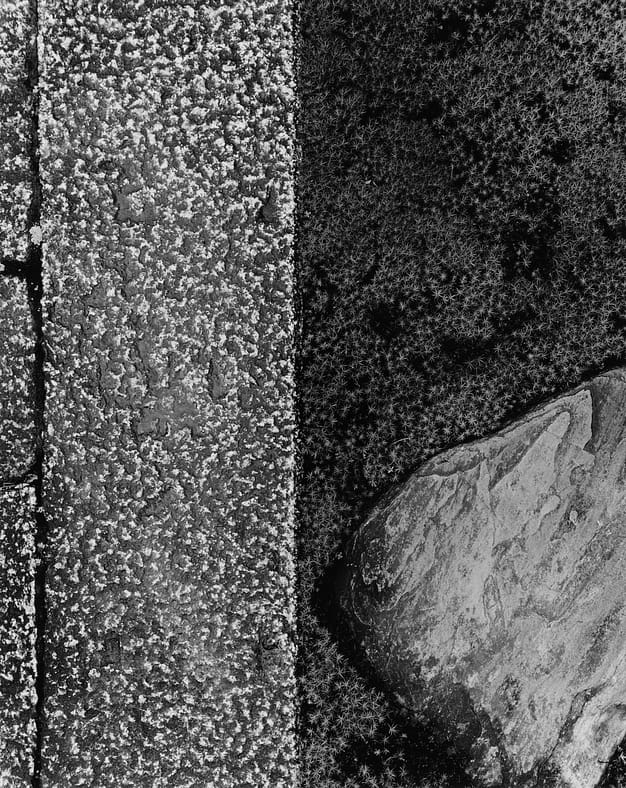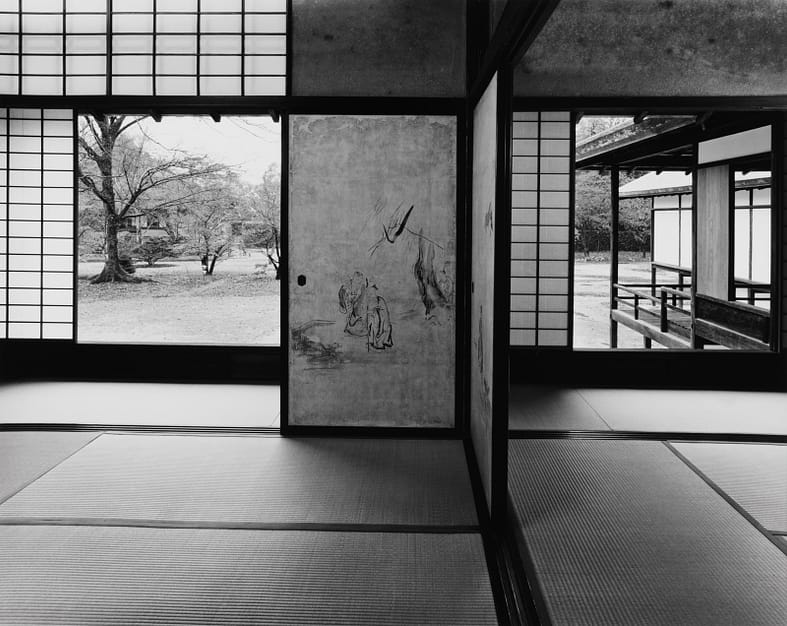Portland Japanese Garden is hosting a photography exhibition featuring an architectural and garden treasure of Japan – Katsura Imperial Villa in Kyoto – by one of the country’s most celebrated photographers, Ishimoto Yasuhiro.


This year marks the centennial anniversary of the artist’s birth. Ishimoto was born in San Francisco in 1921 and raised in Japan. He returned to the U.S. at the age of 17 to study agriculture at the University of California. His studies were abruptly interrupted with the start of World War II, when Ishimoto was detained at an internment camp in Colorado. There, he picked up the camera that eventually led him to pursue a career in photography.
After the war, Ishimoto enrolled in the Institute of Design, Chicago (New Bauhaus), where he studied photography with Harry Callahan and Aaron Siskind. In 1953, he traveled back to Japan to photograph what would become the masterpiece of his artistic oeuvre – the Katsura Imperial Villa series. Through these images, Ishimoto explored the intricate and interconnected relationships between architecture, landscape, and art in Japanese aesthetics and culture.

Ishimoto’s influence on modern architecture, art, and culture is far-reaching. Here at Portland Japanese Garden, Katsura Imperia Villa served as architectural inspiration for the Cultural Village, which was completed in 2017. The graceful balance between the existing environment unique to the Pacific Northwest and formation of new architecture is considered an homage to Japan’s traditional philosophies around the interconnected worlds of nature, art, and humanity.
Ishimoto was designated a Person of Cultural Merit by the Japanese Government in recognition of his accomplishments and contributions to Japanese culture. His work and his life remain a living bridge between the cultures of America and Japan.


The Katsura Imperial Villa was originally built in the early 17th century on the bank of the Katsura River in Kyoto, for Their Imperial Highnesses Toshihito Shinno and Toshitada Shinno of the Hachijo-no-Miya family. The design of the villa is globally considered as the apex of traditional Japanese approach on the existence of space and refined simplicity. Today, Katsura Imperial Villa is a popular, yet tightly restricted tourist destination in Kyoto that allows a limited number of annual visitors to preserve the centuries-old treasure.
Within the grounds is a 14.3acre traditional strolling pond style Japanese garden. The garden has been touched by a succession of landscape architects and designers, tea masters, and poets from the ruling samurai class. While many masters of craft influenced the space, the common design principle always remained in place: to achieve an organic integration of architecture, nature, and culture that continuously offers a new perspective.
Courtesy of the Deborah and Robert Zagunis Collection
Photos:
Ishimoto Yasuhiro, Katsura Villa, 1953–1982
©Kochi Prefecture, Ishimoto Yasuhiro Photo Center
Ishimoto Yasuhiro, Self-portrait, 1975
©Kochi Prefecture, Ishimoto Yasuhiro Photo Center
View Virtually
Language Matters
There is no universal agreement on what we call the camps or the process that created them — ‘incarceration,’ ‘internment,’ and ‘concentration’ are a few of the terms that were interchangeably used. While some might find ‘concentration’ misleading because these were not extermination camps, the term predates the Holocaust and is by definition a place where large numbers of people are detained or confined under armed guard. We believe that awareness of the historical import of these words, as well as care in using them, is an important way to respect the collective memory of the victims and grants us greater power to confront injustice and cultivate peace.
“A concentration camp is a place where people are imprisoned, not because of the crimes they committed, but simply because of who they are. During World War II, America’s concentration camps were clearly distinguishable from Nazi Germany’s. Despite the difference, all had one thing in common: that people in power removed a minority group from the general population and the rest of society let it happen.” – Joint Statement by Japanese American National Museum and the American Gathering of Jewish Holocaust Survivors at the 1994 exhibition, America’s Concentration Camps: Remembering the Japanese American Experience.